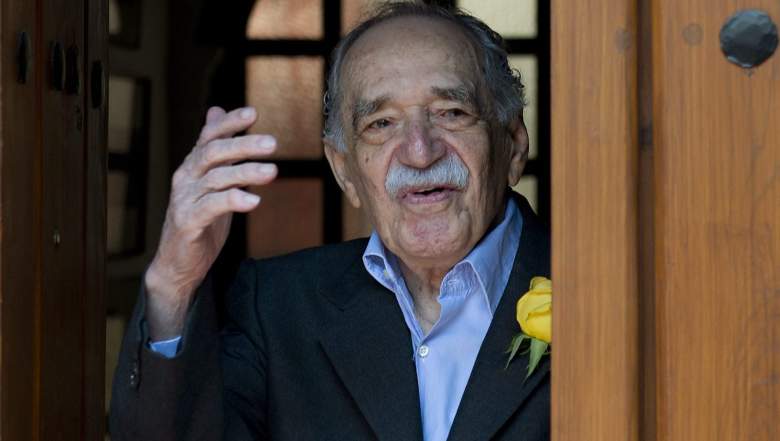
Getty Nobel Literature prize-winning writer and journalist, Colombian Gabriel Garcia Marquez, waves while coming out from his house to meet the press during his 87th birthday, in Mexico City, on March 6, 2014.
Gabriel García Márquez, the great Latin American author and Nobel laureate, would have turned 91-years-old on March 6, 2018. He’s the subject of a Google Doodle honoring his enormous literary contributions.
“Born in Aracataca, Colombia, Gabo is considered one of the most significant authors of the 20th century,” Google noted with the Google Doodle. “In his long literary career, he penned over 25 books, transporting readers into a world of magical realism where they find themselves in the lush, humid tropics — moldering into solitude or being slowly consumed by the throes of passion.”
Here’s what you need to know:
1. Gabriel García Márquez Was Known for His ‘Magical Realism’ & Started Out a Journalist
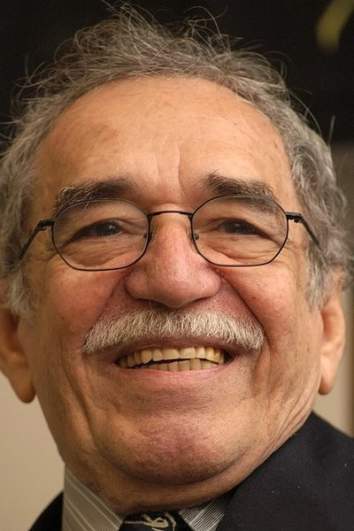
Gabriel García Márquez
Like many fiction authors before him, Gabriel García Márquez started out with non-fiction, working as a journalist. Born in Aracataca, Colombia, he “grew up listening to family tales,” according to Biography.com.
These stories would be influential in his own writing.
“He went to a Jesuit college and began to read law, but his studies were soon broken off for his work as a journalist,” The Nobel Prize biography for him noted before he died. “In 1954 he was sent to Rome on an assignment for his newspaper, and since then he has mostly lived abroad – in Paris, New York, Barcelona and Mexico – in a more or less compulsory exile. Besides his large output of fiction he has written screenplays and has continued to work as a journalist.”
He eventually turned to fiction, and he developed a style called “magical realism.” According to Biography.com, this style combines more conventional storytelling with vivid fantasy.”
“Imagination is used to enrich reality,” The New York Times described of his approach.
“His novels Cien años de soledad (One Hundred Years of Solitude) and El amor en los tiempos del cólera (Love in the Time of Cholera) have drawn worldwide audiences,” Biography.com reports. He died in 2014.
2. García Márquez Won the Nobel Prize for Literature for His ‘Richly Composed World of Imagination’
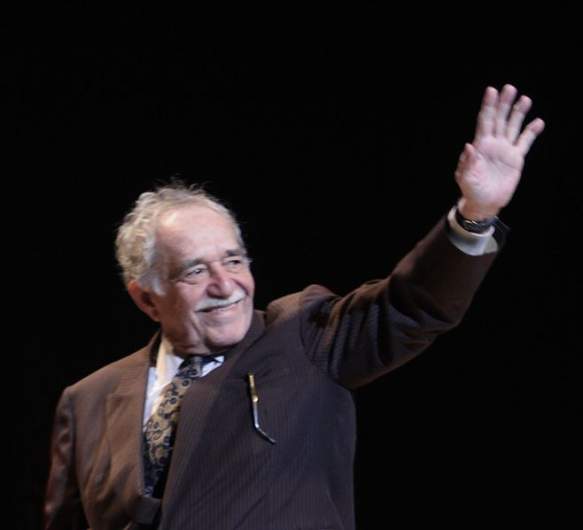
Gabriel García Márquez
The Nobel Prize in Literature 1982 was awarded to Gabriel García Márquez “for his novels and short stories, in which the fantastic and the realistic are combined in a richly composed world of imagination, reflecting a continent’s life and conflicts,” as the Nobel website notes.
“Latin America neither wants, nor has any reason, to be a pawn without a will of its own; nor is it merely wishful thinking that its quest for independence and originality should become a Western aspiration,” he said in his Nobel lecture. “However, the navigational advances that have narrowed such distances between our Americas and Europe seem, conversely, to have accentuated our cultural remoteness.”
You can read the full Nobel lecture and listen to an audio recording of it here.
According to Al-Jazeera, “Gabo, as he was also known, in 1982 became the first Colombian and only the fourth Latin American author to win the Nobel Prize in Literature.”
3. He Grew Up in Colombia, Where He Was Raised By His Grandparents
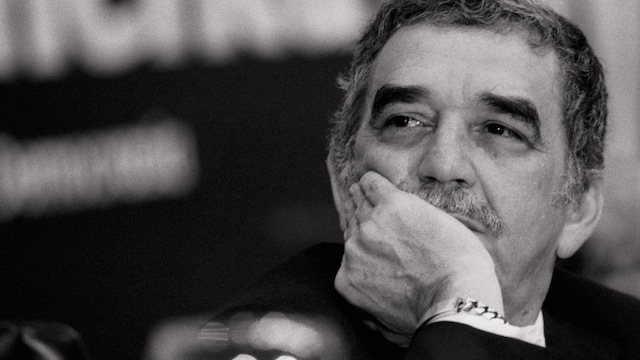
(Getty)
Gabriel García Márquez “was born in 1927 in the small town of Aracataca, situated in a tropical region of northern Colombia, between the mountains and the Caribbean Sea,” the Nobel website reports. He later spent time in Mexico, and he died in Mexico City, where he was living at his time of death.
Growing up in Colombia, García Márquez “grew up with his maternal grandparent – his grandfather was a pensioned colonel from the civil war at the beginning of the century,” according to the Nobel website. He later said that he tried to write “based on the way my grandmother used to tell her stories.”
His grandfather was a storyteller with a colorful life. “His grandfather was a colonel who killed a man in a duel and had three legitimate children,” notes Al-Jazeera.
4. Gabriel García Márquez Suffered Health Ailments Later in Life & Befriended Castro
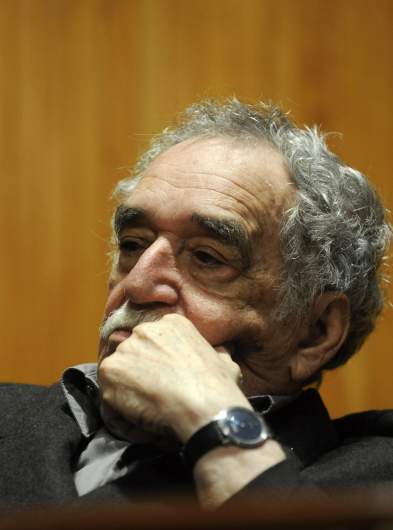
Colombian Nobel Prize for Literature 1982 Gabriel Garcia Marquez takes part in a forum organized by the Julio Cortazar department of the University of Guadalajara, in Guadalajara, Mexico on November 29, 2008.
Although he lived a long and obviously productive life, the great author was afflicted with health struggles in his final years. He was diagnosed with Alzheimer’s Disease at age 85, “after fighting a long battle against lymphatic cancer which he contracted in 1999,” reports Al-Jazeera.
The site reports that he was affiliated with “left-wing causes,” including defense of the Sandinistas, reported Colombian Community Party membership and a friendship with Fidel Castro. “…for more than three decades the US denied him a visa to travel,” noted Al-Jazeera.
“García Márquez became a standard-bearer for Latin American letters, establishing a route for negotiations between guerillas and the Colombian government,” reported The Guardian.
He died from pneumonia. When he died, the Colombian president wrote on Twitter, “A thousand years of solitude and sadness at the death of the greatest Colombian of all time. Solidarity and condolences to his wife and family … Such giants never die.”
5. The Google Doodle Pays Homage to the Culture & Locale That Marquez So Eloquently Described
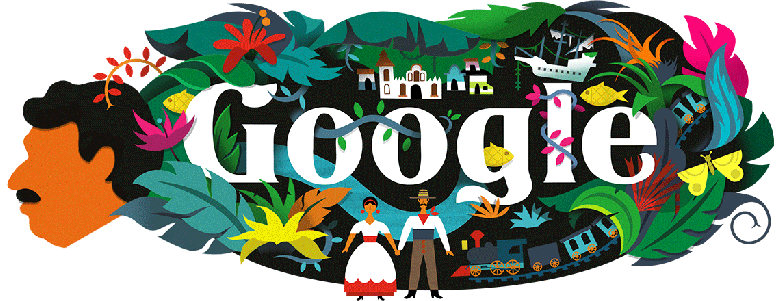
Gabriel García Márquez Google Doodle.
Google opened its Google Doodle explanation with a vivid passage:
“Deep in the Amazonian jungle, through the lush green canopy and multi-hued vibrance of the hot and humid rainforest, look carefully and you might catch a glimpse of a city of mirrors; a city separated from the world by an expanse of water and yet reflecting everything in and about it; a city that is home to the Buendia family and the site of strange otherworldly happenings. Here, little fish made of pure gold dazzle the eye; large yellow butterflies flit through the flowers; a train chugs along once in a blue moon; and the only visitors are the all-knowing, mysterious gypsies who come bearing strange tales.”
What is this city? “Depicted in today’s Doodle is this magical city of Macondo, brought to life by the Colombian author, journalist, and Nobel laureate Gabriel García Márquez (affectionately known as Gabo throughout Latin America) in his book, ‘A Hundred Years of Solitude,’” Google explained.
“Gabo’s keen sense of political activism and courage also allowed him to author a number of non-fictional works that eloquently document the times that he lived in, ‘News of a Kidnapping’ being among the most famous of these. For all this and more, we celebrate the 91st birthday of a cultural icon whose star continues to shine brightly over the literary and journalistic worlds of Latin America and beyond.”
